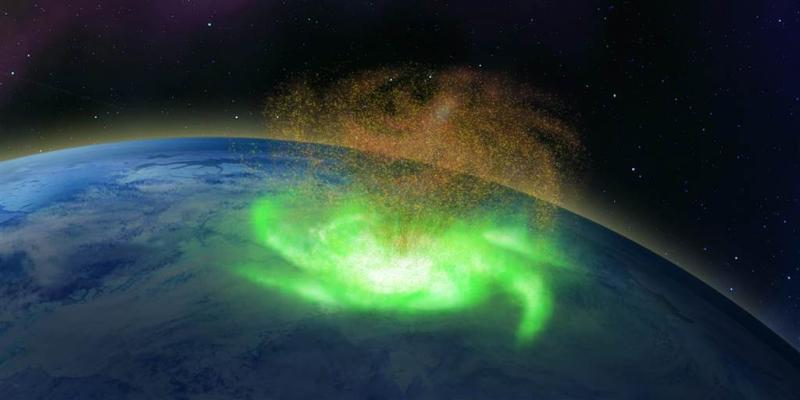'Space hurricane' that rained electrons observed for the first time



When it comes to extreme weather, it's safe to say a "space hurricane" qualifies.
Scientists said last week they observed a previously unknown phenomenon — a 620-mile-wide swirling mass of plasma that roiled for hours in Earth's upper atmosphere, raining electrons instead of water.
The researchers labeled the disturbance a space hurricane because it resembled and behaved like the rotating storm systems that routinely batter coastlines around the world. But until now, they were not known to exist.
"It really wasn't expected," said Larry Lyons, a professor of atmospheric and oceanic sciences at the University of California, Los Angeles. "It wasn't even theoretically known."
Lyons was one of the authors of a study about the finding, which sheds new light on space weather events, that was published online Feb. 26 in the journal Nature Communications.
Scientists from China, the United States, Norway and the United Kingdom found the space hurricane while combing through satellite observations from August 2014. As satellitesorbited around the planet and passed over the North Pole, they caught glimpses of a massive disturbance in the upper atmosphere.
The spiral-armed space hurricane swirled roughly 125 miles over the North Pole, churning in place for almost eight hours, Lyons said.
"You could see flows of plasma going around, which were like the winds of the space hurricane," he said. "These flows were strongest at the edge and decreased as you moved toward the eye in the center, before picking up again on the other side, just like the flow of air in a regular hurricane."
But that's perhaps where the similarities end. Unlike with regular hurricanes that can dump huge amounts of precipitation over Earth's surface, the scientists instead observed electrons raining into the upper atmosphere.
Space hurricanes, like other space weather events, are caused by streams of plasma unleashed from the sun in what's known as the solar wind. As these clouds of charged particles hurl through space, they can fuel magnetic storms and trigger stunning displays of the northern or southern lights.
"Tropical storms are associated with huge amounts of energy, and these space hurricanes must be created by unusually large and rapid transfer of solar wind energy and charged particles into the Earth's upper atmosphere," study co-author Michael Lockwood, a professor of space environment physics at the University of Reading in the U.K., said in a statement.
Scientists routinely monitor space weather because radiation from particles from the sun can wreak havoc on satellites in orbit and can occasionally disrupt infrastructure on the ground, such as surges in power lines. Since the observed space hurricane occurred over the North Pole, it's not thought that it would pose many dangers to people at lower latitudes, but there are implications for communications and navigation systems.
"People who are interested in satellite communications and GPS signals are going to care a lot," Lyons said.
He added that he and his colleagues are planning to conduct follow-up studies to determine how often space hurricanes of this size and duration occur, and whether smaller, shorter storms happen more frequently.
Lyons said this type of discovery is one that could have been easily missed had the researchers not spotted clues in the six-year-old data and had the patience to stitch together all the threads.
"We had various instruments measuring various things at different times, so it wasn't like we took a big picture and could see it," he said. "The really fun thing about this type of work is that we had to piece together bits of information and put together the whole picture."




The aurora it triggered must have been amazing.
I have a friend who went to Alaska a few weeks ago for vacation (yes, Alaska in February), and he got some great pictures of the northern lights.
First I've heard about this sort of phenomenon, very interesting
Relax, it's only Bram Stoker stirring things up.
As Spock would say, “fascinating”!
Sounds like I need a tinfoil umbrella.
Here is a much more boring article with a more scientific evaluation of the phenomena for electrical geeks like me.
Enjoy!
Science is never boring!
Well certainly not for us.